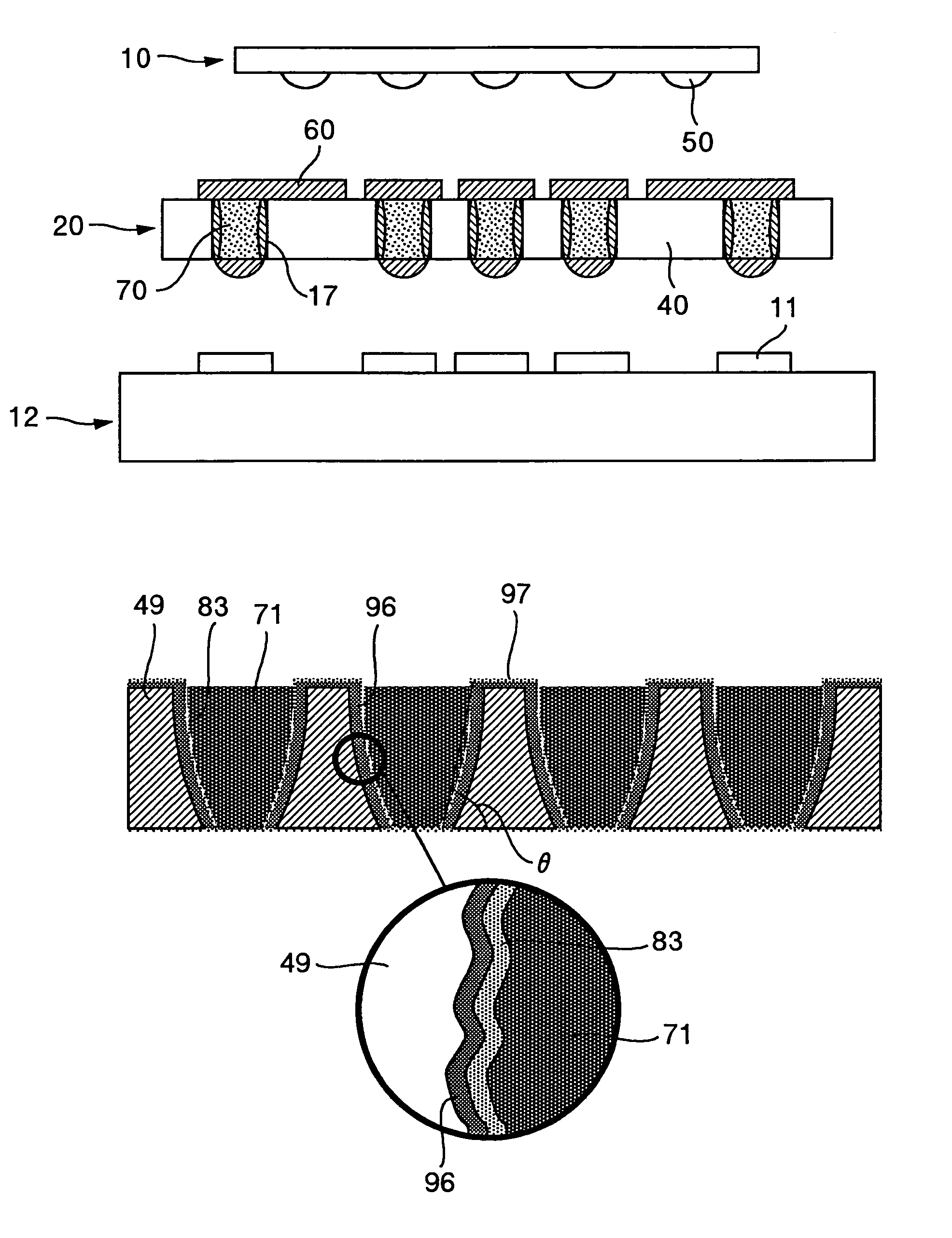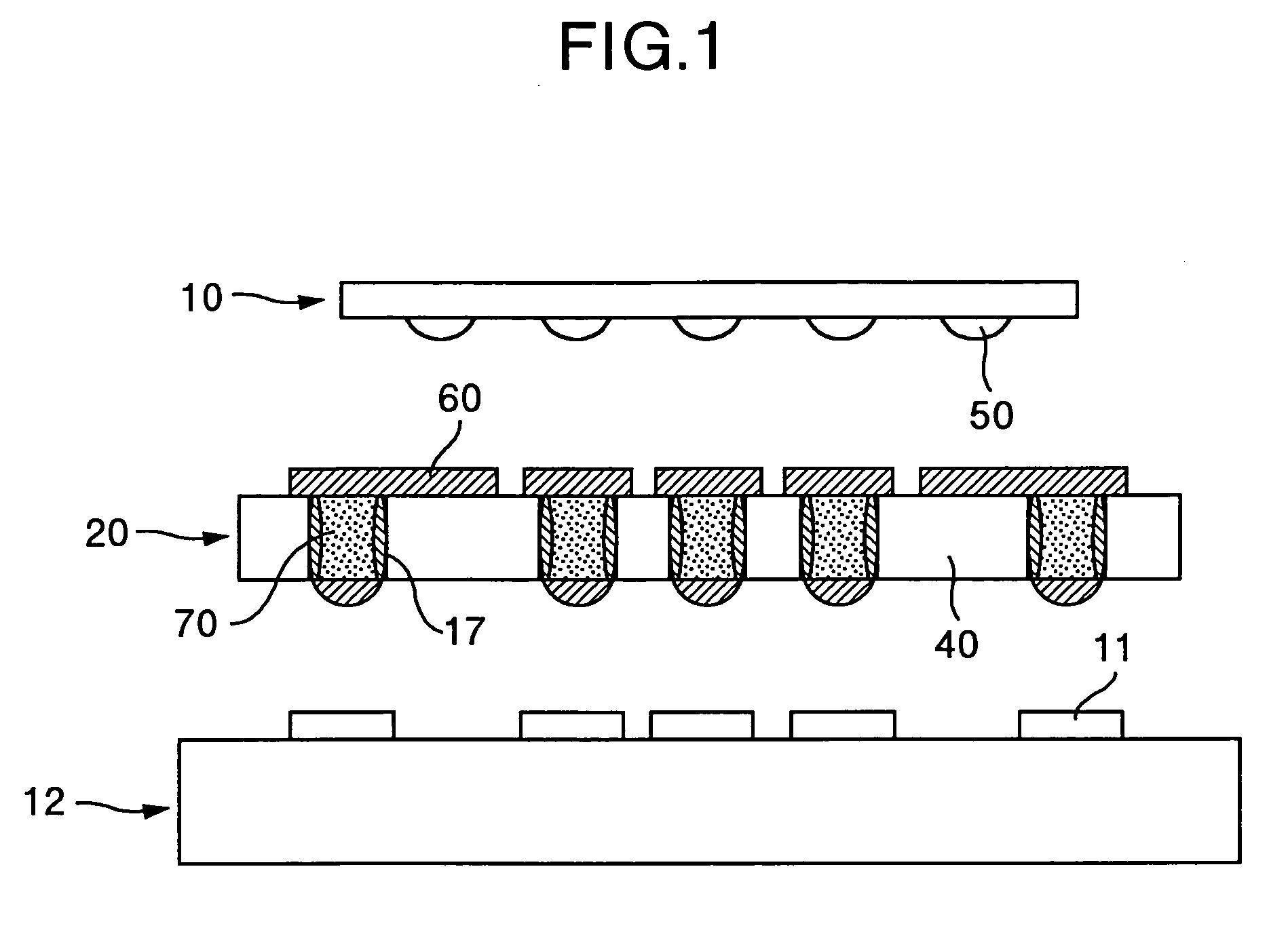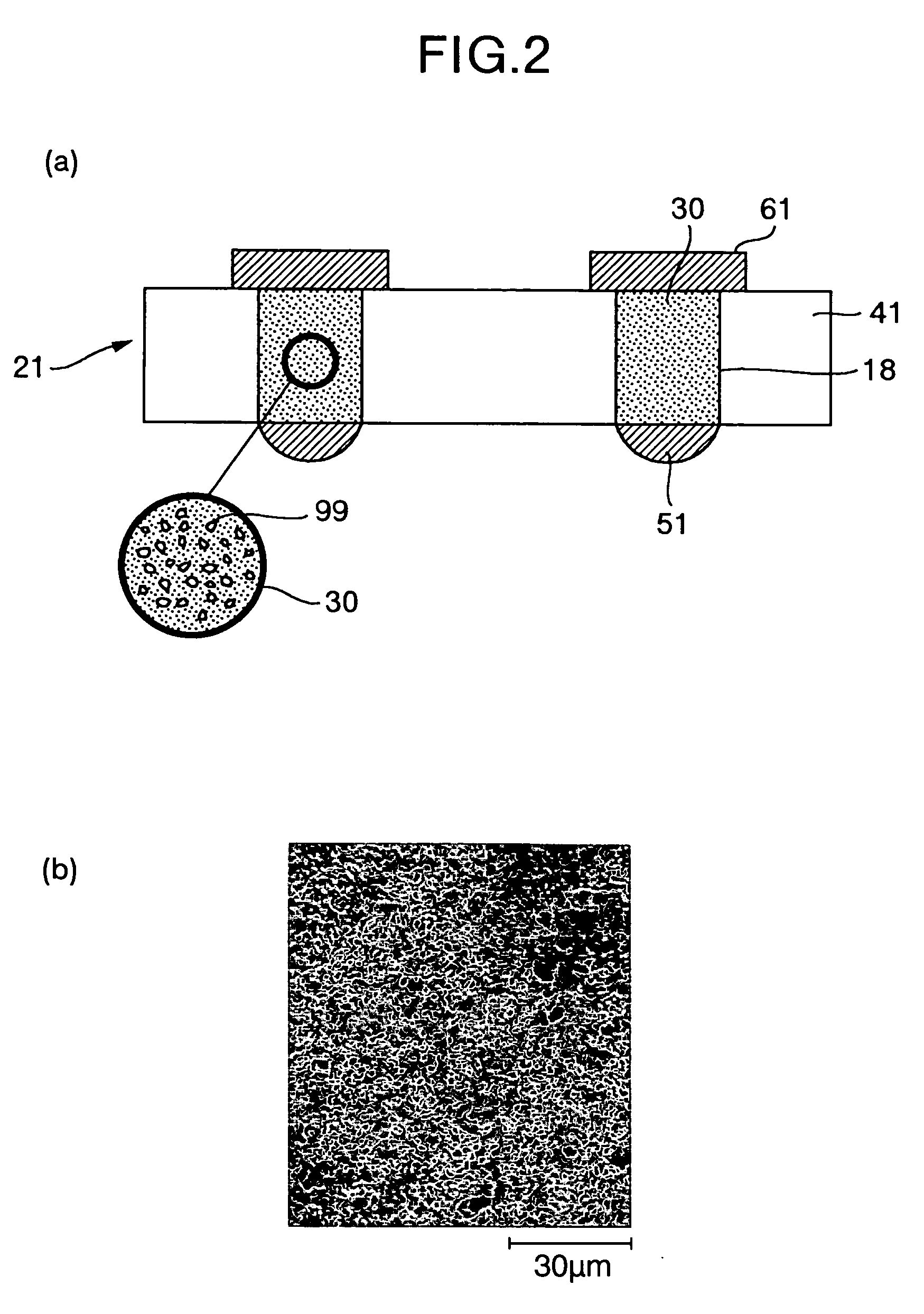Wiring glass substrate for connecting a semiconductor chip to a printed wiring substrate and a semiconductor module having the wiring glass substrate
a technology of wiring glass and semiconductor chips, which is applied in the direction of printed circuit aspects, printed element electric connection formation, dielectric characteristics, etc., can solve the problems of low planarity and high cost of ceramics, and the pitch of pins has become more difficult to connect the lead frame to the printed wiring board withou
- Summary
- Abstract
- Description
- Claims
- Application Information
AI Technical Summary
Benefits of technology
Problems solved by technology
Method used
Image
Examples
embodiment 1
[0095]First, the invention will be explained.
[0096]FIG. 1 shows a wiring connection glass substrate of the invention. This wiring connection glass substrate (wiring glass substrate) 20 is for connecting a bare chip 10 to the upper side in the drawing and a printed wiring substrate 12 to the lower side in the drawing. The kind of glass of a glass substrate 40 as a base of the wiring connection glass substrate 20 is not particularly limited. However, because alkali components contained in glass are likely to precipitate to the surface, those types of glass which contain small alkali components such as alkali-free glass, borosilicate glass, aluminosilicate glass, lithium silicate glass, etc are preferred.
[0097]It is also possible to use quartz glass, though the cost somehow increases, and soda glass that is advantageous in the cost so long as it can suppress precipitation of the alkali components. Holes 17 are bored in the wiring connection glass substrate 20 and penetrate through the ...
embodiment 11
[0102]FIG. 2(b) shows a surface photograph of the via-hole electrode 70. The electrode is found porous as shown in FIG. 2(b). The porous electrode has the pores (void) 99 and fine holes. The porosity of the pores 99 is not particularly limited but is preferably greater than the porosity of pores of the electrode used for the wiring 61 and the bump 51. Incidentally, the method of forming the porous electrode will be explained in later-appearing
[0103]The formation of the bump 51 to be electrically connected to the printed wiring substrate 12 may either use as such the conductive material 30 for forming the via-hole electrode 70 or may use plating. The formation of the wiring 61 to be electrically connected to the bare chip 10 may either use as such the conductive material 30 for forming the via-hole electrode 70 or may use plating in the same way as described above. Plating may be either electrolytic plating or electroless plating.
[0104]FIG. 3 shows deflective strength of a non-etched...
embodiment 2
[0107]Next, the invention will be explained.
[0108]FIG. 4(a) is an enlarged view of a via-hole portion of a wiring connection glass substrate (wiring glass substrate) 21 according to the invention. Each of the holes 18 is formed by laser machining, machining, chemical cutting, etc in the same way as described above and the shape of the holes is not particularly limited.
[0109]Referring to FIG. 4(a), a porous conductive material 30 exists at a center inside each of the holes 18 and a layer of low melting point glass 80 exists inside or on a surface of pores 99. A plurality of pores 99 is scattered inside the conductive material 30. The conductive material 30 is a metal and an alloy of Pt, Au, Ag, Cu, Al, Cr and a solder material in the same way as described above. The low melting point glass 80 is for bonding the inner wall surfaces of the holes 18 formed in the glass substrate 41 and the conductive material 30 or for reinforcing the inside of the conductive material.
[0110]The low melt...
PUM
| Property | Measurement | Unit |
|---|---|---|
| temperature | aaaaa | aaaaa |
| Young's modulus | aaaaa | aaaaa |
| thickness | aaaaa | aaaaa |
Abstract
Description
Claims
Application Information
 Login to View More
Login to View More - R&D
- Intellectual Property
- Life Sciences
- Materials
- Tech Scout
- Unparalleled Data Quality
- Higher Quality Content
- 60% Fewer Hallucinations
Browse by: Latest US Patents, China's latest patents, Technical Efficacy Thesaurus, Application Domain, Technology Topic, Popular Technical Reports.
© 2025 PatSnap. All rights reserved.Legal|Privacy policy|Modern Slavery Act Transparency Statement|Sitemap|About US| Contact US: help@patsnap.com



